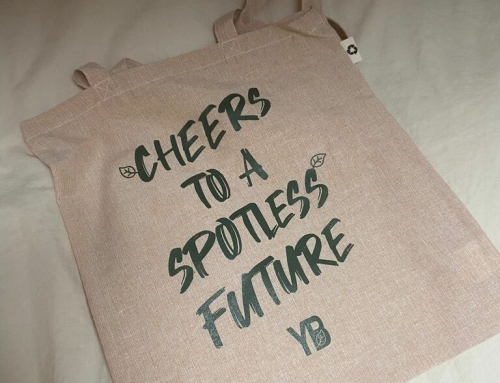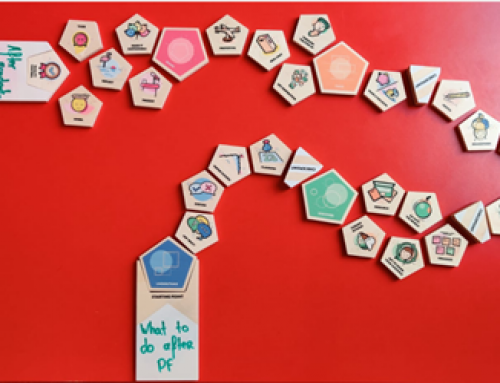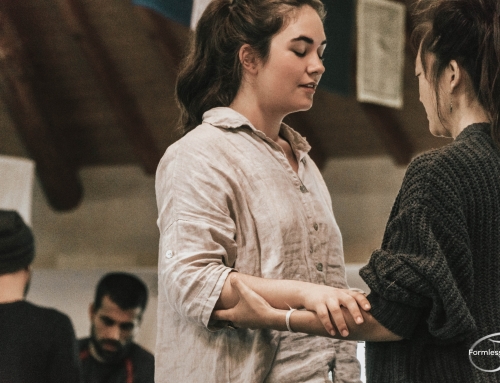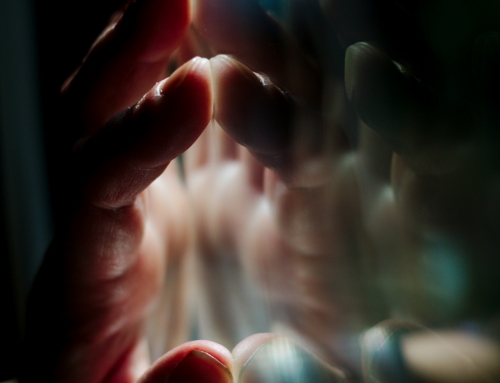I believe that we “should never lose sight of what we believe could be.” This quote by renowned acting teacher William Esper (2008) has been a guiding principle to me in both my professional life, as well as my general worldview.
In January 2015, I decided to devote myself to the artform of acting and storytelling and attended acting school. I felt intensely drawn to this practice, through which we define the truth of our condition: the narrative of what it means to be a human today, and how we relate to ourselves, each other, and the planet. Because of my deep personal interest in these topics, I wanted to translate my experience in acting and storytelling into my professional practice within transformative social innovation.
In relation to the truth of our condition, I was deeply inspired by the writings of biologist and systems scientist Daniel Wahl (PhD). According to Wahl, we are collectively living in a narrative of separation – a sense of separation from ourselves, each other, and the community of life as a whole. Wahl believes that the multiple crises that we face are symptoms of a pathological understanding and experience of separation, and to ultimately change our systems, he believes it is essential to make a transformation from this narrative of separation into a narrative of interbeing (2016).
During my professional development, this notion of relational narratives and recognizing relational conditions of “separation” and “interbeing” became central in my professional perspective.
According to Senge, Kania & Kramer, changing (the narratives of) our relationships and connections is one of the six conditions of systems change. A simplified definition of systems change is “shifting the conditions that hold a problem in its place.” (n.d.)
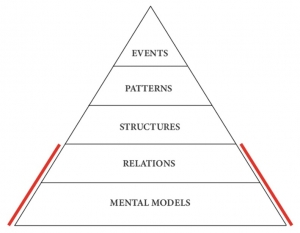
Figure 1: Systems Thinking Pyramid (n.d.).
The mental models and relationships form the fundament in this system thinking pyramid (Fig. 1). The value and meaning that we assign to things inform the narratives of how we interact, and determines what events ultimately happen. Both social innovator Hilary Cottam and systems thinker Nora Bateson emphasize the importance of focusing on the relational for systems change. “It is all about relationships. Relationships are the critical resource we have.” (Cottam, 2015).
According to systems thinker Nora Bateson, to truly change systems, the focus should be on changing relationships. “Relationships are upstream of structures. If the structures are changed before the relationships change, the pull of relational habit will morph structural change to serve those relational processes (2019).
To truly change systems, we should shift the relational conditions that hold a problem in its place. To re-arrange how people relate to one another, to improve the quality of our interactions. I would like to indicate the importance of the quality of our interactions in changing systems, with the following metaphor:
Our interactions, like the root network of a tree, are invisible to us. However, the quality of life underground and the quality of resources that are shared between trees (the interaction of the trees underground) are the conditions of how the trees grow above the ground, and what the forest looks like. The mindset (mental models) that we carry and the quality of our interactions, determine what physical reality is created.
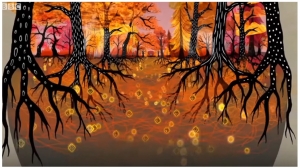
Figure 2: Root network of trees (BBC, 2019).
If we want to change our structures and systems, we should cultivate the soil of the forest, or what Otto Scharmer calls the “social field” – improve the quality of interactions and way we relate to one another.
As I mentioned earlier, I have developed two larger perspectives to look at these relational conditions and quality of the social field (Fig. 3). One is a narrative of separation, and the other is a narrative of interbeing. Through each of these glasses, we can look at certain contexts within society, to see how people relate to one another, and what the results are of interacting with one another in that way. Each of these narratives can be identified in many different contexts: how we relate to one another on a global level, as well as on a community or individual level within an organization, for example.

Figure 3: Narratives of separation and interbeing (n.d.).
Many problems that we face within society today, are symptoms of living in a narrative of separation, a sense of separation between each other, ourselves, and the planet. In this narrative of separation, we collectively create results that no-one wants. From environmental issues, to social divides (Scharmer, 2016). However, to deal with these systemic problems, we can make a transformation from living in this narrative of separation, into living a narrative of interbeing. To shift our relational conditions and way of interacting, that are at the roots of the problems we face today.
I see my role within transformative social innovation as to shift relational conditions that hold a systemic problem in its place, by designing facilitating social innovative processes and dialogic space of sensemaking and deep conversation, for new narratives to emerge between people; to reinvent how we relate to ourselves, each other, and the world as a whole; to cultivate the soil of the social field on micro level, to ultimately affect system change on macro level.
“Time and time again, we are thrown into blank-canvas situations that require us to look at ourselves and collective patterns of behavior to reinvent ourselves: to know who we are and where we want to go as an institution, as individuals, and as a community.” (Scharmer, 2016). In essence, this is the dialogue and type of social innovative process that I wish to facilitate.
I am curious to further broaden my professional perspective and approach in facilitating processes to shift relational conditions. Therefore, I would like to co-design a new social innovative challenge in a context that is relevant to the concepts that I shared in this blog; to discover together with all the involved stakeholders “what else could be.”
References:
[BBC News]. (2018, 29 june). How trees secretly talk to each other – BBC News. [Video File].
Retrieved from: https://www.youtube.com/watch?v=yWOqeyPIVRo
[TED]. (2015, Nov 17). Social services are broken. How we can fix them. Hilary cotam. Ted.com [Video File]. Retrieved from: https://www.youtube.com/watch?v=Mr8nvXvl-y8
Esper, W., DiMarco D. (2008). The actors art and craft. New York. NY: Random House USA.
Senge, P., Kania, J., Kramer, M. (n.d.). The water of systems change. Retrieved from: https://www.fsg.org/publications/water_of_systems_change
Wahl, D. (2016). Designing regenerative cultures. Axminster, England: Triarchy Press.
Nora Bateson. (2019, 10 dec). “Here the thing about system change: relationships are upstream of structures. If the structures are changed before the relationships change – – the pull of relational habit will morph structural change to serve those relational processes. #WarmDataLab” [Twitter Post]. Retrieved from: https://twitter.com/NoraBateson/status/1204317404039467008
[Social Venture Circle]. (2010, 9 nov). Otto Scharmer: “The Blind Spot of Leadership.”. [Video File].
Retrieved from: https://www.youtube.com/watch?v=n_AXChhTbmU

